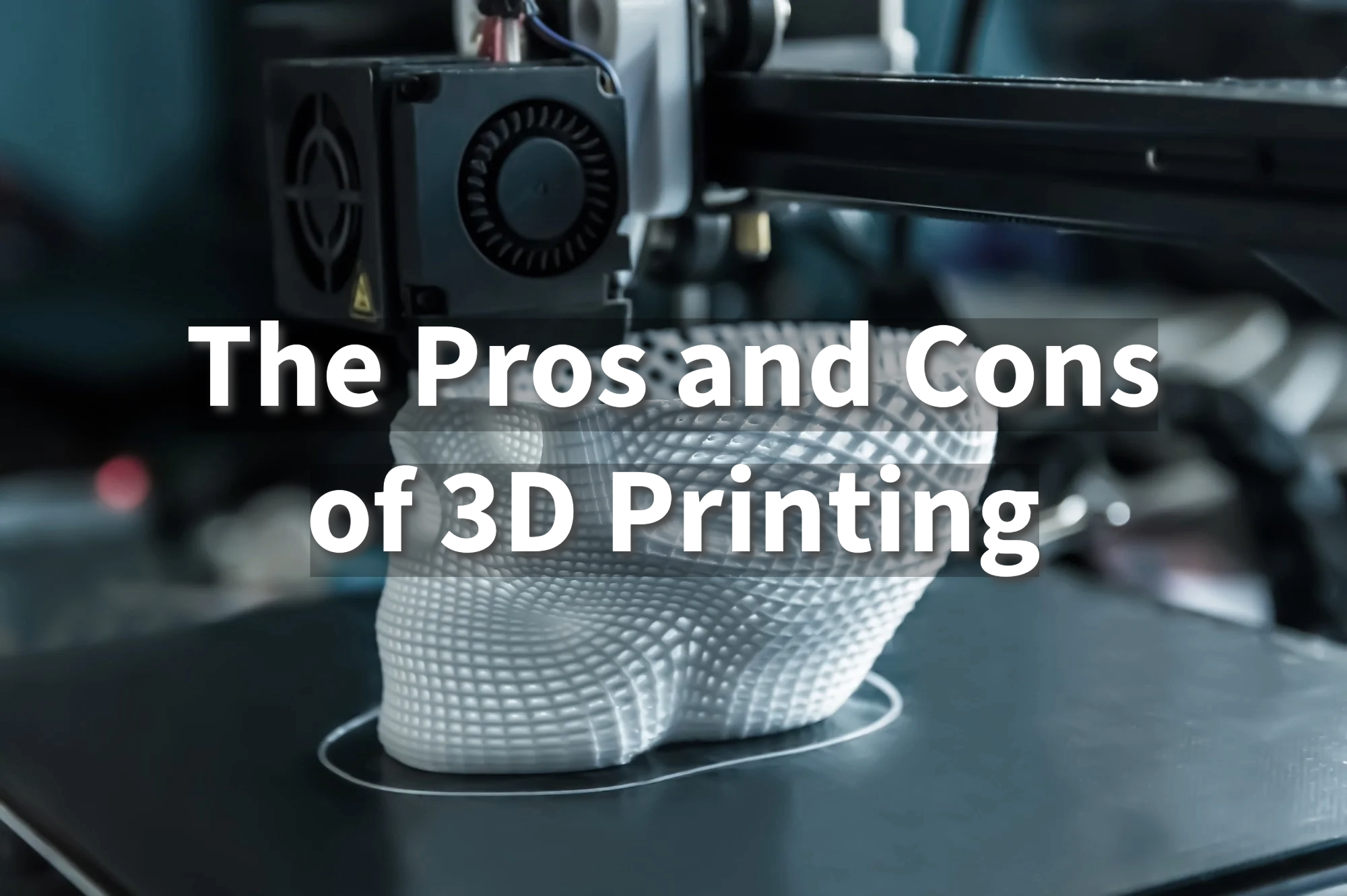Pros and Cons of 3D Printing

Discover the advantages and limitations of 3D printing, from cost savings to material limitations, and decide if it's right for your next project.
Introduction to 3D Printing
Brief History and Evolution
3D printing, also called additive manufacturing, started in the 1980s. It grew quickly from making simple plastic models to complex parts. A major change in the early 2000s made 3D printing more affordable and widely available. Today, 3D printing keeps improving, pushing the limits of materials and precision.
Overview of Current Applications Across Industries
3D printing is used in many industries. In healthcare, it makes custom prosthetics and implants. In aerospace, it helps create lightweight parts. The automotive industry uses it for rapid prototyping, and consumer goods companies use it for personalized products. Architecture uses it for models and building parts. 3D printing continues to drive innovation as new materials and techniques develop.
Pros and Cons Table
Pros | Cons |
|---|---|
High customization and design flexibility | Limited to certain materials |
Rapid prototyping with faster turnaround | Higher costs for large-scale production |
Cost-effective for low-volume runs | Equipment can be expensive |
Lower material waste (eco-friendly) | Requires skilled operation and setup |
Accessible to startups and hobbyists | Intellectual property and design risks |
Advantages of 3D Printing
Customization: 3D printing makes it easy to customize parts to fit specific needs, allowing for complex shapes.
Rapid Prototyping: It is great for quickly making prototypes, such as cosmetic packaging, speeding up the design process.
Cost Efficiency for Low-Volume Production: For small production runs, 3D printing can be cheaper than traditional methods.
Sustainability: 3D printing creates less waste since materials are added layer by layer.
Accessibility for Small Businesses: It allows small businesses and individuals to create without needing large facilities.
Disadvantages of 3D Printing
Material Limitations: The range of materials is still limited compared to traditional manufacturing.
Slower for High-Volume Manufacturing: 3D printing is slower for large-scale production since each part is printed individually.
High Initial Investment: Industrial-grade 3D printers can be expensive, making the initial cost high.
Skill Requirements: Using 3D printing requires knowledge of 3D modeling and printer settings.
Intellectual Property Issues: It is easy to copy designs, raising concerns about intellectual property.
Comparative Use Cases

Source: precious3d.com
When 3D Printing Is Useful
3D printing works best for industries that need customized or small production runs, like healthcare and aerospace. It's great for making patient-specific implants and lightweight parts that can be optimized for performance.
In the automotive industry, 3D printing is useful for producing specialized tools, custom fixtures, and low-volume parts that would be too expensive to make using traditional methods.
When Traditional Methods Are Better
Traditional methods, like injection molding, are better for high-volume production. They are faster and cheaper for making lots of identical parts and high-strength materials.
For example, consumer products like plastic bottles or electronics cases are better produced with traditional manufacturing, which can create thousands of units quickly and cost-effectively. Additionally, materials that need very high strength or heat resistance are often better processed through traditional methods like casting or forging.
Conclusion
3D printing offers customization, fast prototyping, cost efficiency for small runs, sustainability, and accessibility. However, it has limitations, like material constraints, slower high-volume production, high costs, skill requirements, and intellectual property issues.
3D printing is ideal for customized, small-batch, or complex projects. For high-volume production or certain materials, traditional methods are better.
Unionfab: Your 3D Printing Solutions
Ready to unlock the potential of 3D printing? Whether you're a small business or an industry leader, Unionfab provides precision, speed, and flexibility to meet your project’s unique needs.
Contact us today to explore how we can bring your vision into reality with the latest in 3D printing technology.

FAQs about 3D Printing
What are the risks of 3D printing?
3D printing has several risks, including equipment malfunction, which can cause fires if not monitored properly, and material hazards, as certain plastics or resins emit toxic fumes. Intellectual property issues can also arise since designs can be easily copied and distributed.
Additionally, poor quality control and inconsistent print outcomes may affect the final product's durability and usability.
What is the biggest problem with 3D printing?
One of the biggest challenges in 3D printing is material limitations. Many 3D printers can only work with specific materials, and even then, the strength, flexibility, and durability of these materials may not match those of traditionally manufactured products.
This can restrict the types of products that can be created and may not meet industry standards for certain applications.
Is it toxic to 3D print?
It can be, depending on the materials used. Some 3D printing filaments, like ABS, release potentially harmful fumes when heated, and certain resins used in stereolithography (SLA) printers are toxic to touch before they’re cured.
Using proper ventilation, wearing protective gear, and choosing safer materials, such as PLA, can help minimize toxicity risks.
How expensive is it to 3D print?
The cost of 3D printing varies widely based on printer type, material, and project complexity. Basic desktop printers and affordable filaments like PLA may keep costs low for hobbyists.
However, industrial-grade printers, high-quality materials, and professional services can be more costly, especially for complex or large-scale projects, with prices ranging from hundreds to thousands of dollars.
What is the most common 3D print fail?
Layer shifting and warping are two of the most common 3D printing failures. Layer shifting occurs when the printer head moves out of alignment during the printing process, leading to a distorted object.
Warping happens when the bottom layers of the print cool and shrink unevenly, causing the corners to lift off the build plate. Ensuring proper bed leveling, using adhesion aids, and controlling temperature settings can help reduce these issues.

